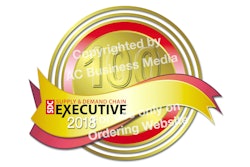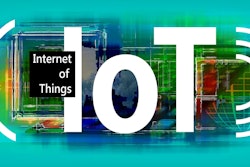
The challenges in healthcare today are well documented—uncertainty in federal regulations, changes in reimbursements that impact both suppliers and providers, and increased pressure to move from fee for service to value based care, among others. The healthcare industry has worked hard both from a supplier and provider standpoint to advance the sophistication of the supply chain. With these advances have come demands to integrate with other key business processes, including financial and clinical systems, to better address the industry’s challenges. While this means there is more work to do, it also presents opportunities for real game-changing innovation.
Limited by Electronic Health Records
The implementation of electronic health records (EHRs) was a $28 billion business in 2016, and is forecast to grow to $36.6 billion in 2021. This is one of the most significant business process technology investments providers are making, with some implementations costing upwards of $1 to 2 billion. Federal meaningful use regulators is one of the biggest drivers of adoption. These systems, like the supply chain, hold a vast cache of data.
EHR systems are implemented so healthcare organizations can deliver more effective and efficient patient care. Clinical documentation of product usage should improve patient safety through better outcomes analysis and adverse event reporting. Electronic capture of the products used during the course of care should drive greater research opportunities among health systems, and drive individual health system revenue growth by helping organizations record complete and accurate information on chargeable items for which they receive reimbursement.
While those goals are critically important, the fulfillment may not be quite so easy to attain. The information in that EHR is limited by its quality, not just accuracy, but scope as well. Provider experience shows that the lack of a true clinically-focused item master limits the effectiveness of achieving these goals. And suppliers are also losing out on important product usage data.
The industry needs a master data management infrastructure across the medical device and supply world. It needs an on-demand virtual item master. Without it, each individual healthcare system is simply burdened with another system that, due to its limitations, demands more time from clinicians and detracts from patient care, as well as adding cost to manually fill in and correct data errors. This is not a design fault with EHRs, but rather the incomplete data upon which they are dependent.
Cost, Quality and Outcomes
But there is an even bigger prize that an accurate, clinically-focused item master can help to deliver, and that is the key to answering one of the critical questions in healthcare today: what the cost of care truly is. When suppliers and providers have real world evidence of when products work and in what circumstances, that is when quality of care can really improve. It is the bullseye of the triple aim—cost, quality and outcomes. It is good for suppliers; it’s good for providers; and it’s great for patients.
EHRs won’t solve this on its own. They need accurate data. And that data should come from an on-demand virtual item master; one that aggregates multiple sources of data, ranging from suppliers to regulatory databases to industry standards groups, into an enriched, consumable state. Further, the on-demand virtual item master must allow integration to a variety of systems via multiple technical protocols in support of numerous business processes. It is the combination of aggregation with delivery to the “last mile” that is key to success for the on-demand virtual item master.
The problems that it solves are several-fold and all too familiar to provider organizations. These organizations need continuously up-to-date product data from many sources with a broad range of attribute information in the system. Nurses and clinicians need complete information of products used in the course of patient care, so they are not forever searching Google to get information to load into the EHR. This allows hospitals to document all supply usage for accurate charge capture, while not having to disrupt the item master maintenance best practices they have established for their buying and inventory management processes. Bottom line, providers need a trusted data source, without having to grow its item master, in order to perform total case costing and other key analytics.
Manual Entry Leads to Inconsistent Data
Taking this down one level deeper, traditional item masters contain only routinely purchased products. Often it is missing many of the supplies that the clinicians need to document in the patient record. At the point of use a clinician then has to stop what he/she is doing, take focus off the patient, attempt to find a product in the EHR item file, and if he/she doesn’t find it, manually enter the information into the patient’s record. Unfortunately, this happens quite often. Clinicians are manually documenting approximately 50 percent of items used in a case, if not more.
What we’ve discovered is that this manual process leads to inconsistent data entry, making it extremely challenging for the supply chain and revenue cycle teams to accurately identify which products were used on a patient. In the worst case, the clinician, out of frustration, simply skips manual documentation. The result is that providers are sometimes capturing only 40-50 percent of charges for every case. As a result, the health system might be losing millions in revenue annually.
Making sure the clinical item master is continuously updated for accuracy and completeness requires an exorbitant amount of time, effort and labor. The data needed for supply chain, clinical and revenue cycle processes differs in many ways, so adding everything to the item master doesn’t make sense from a data management perspective.
Increasing the pressure to get this information right, on Jan. 2, 2018, eligible hospitals and critical access hospitals must submit 2017 meaningful use evidence to the QualityNet Secure Portal (QNet). This mandate was established in 2011 as part of the Centers for Medicare & Medicaid Services (CMS) Medicare and Medicaid Electronic Health Record (EHR) Incentive Program to encourage these hospitals to adopt, implement, upgrade (AIU), and demonstrate meaningful use of certified EHR technology (CEHRT).
A Game Changer
The opportunity for a game changer in healthcare is in use of on-demand virtual item masters to help the industry, through the EHR, get visibility to total cost of care. The information could also be a breakthrough in understanding efficiency of medical devices to deliver quality and outcomes. The overall benefits of an on-demand virtual item master are many:
- Reduce time spent by clinicians documenting supply usage.
- Reduce time spent searching for information on supplies used
- Improve charge capture, completeness of patient record.
- Reduce time spent maintaining item master.
- Significant reduction in item master size and maintenance.
- Maximize data capture via barcode scanning.
- Increased clinician satisfaction.
- Better data for cost accounting and analytics.
- Increased revenue.
- Access to data to optimize reimbursement.
The stakes have never been higher in healthcare, and that means the opportunity for real business process breakthroughs are so critically important. Removing the data silos between clinical, financial and supply chain systems with an on-demand virtual item master is just such an opportunity.




















